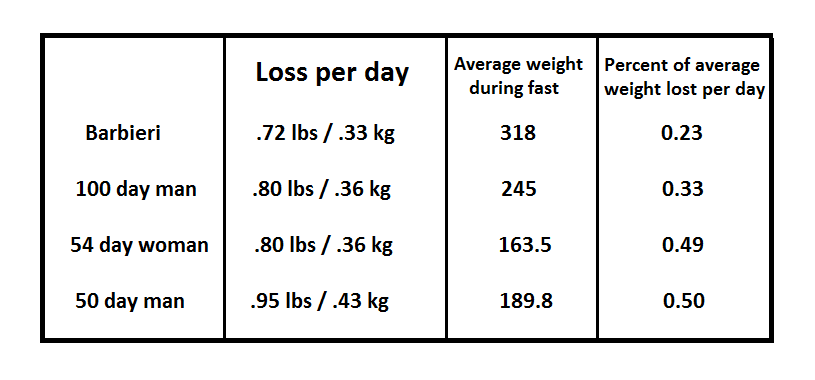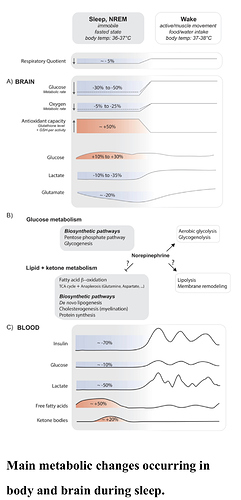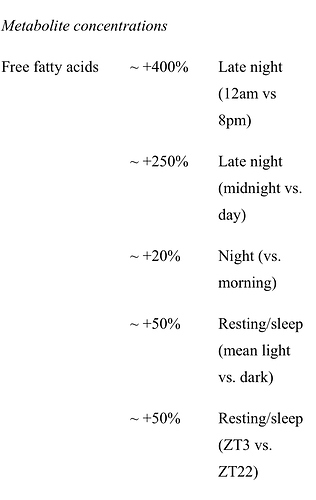Yes, Alec - there is an enormous world of difference at work here. I think that in the end it would be quite complicated, with potentially many influences to think about, rather than any necessary single limit being in place.
Keys’ subjects were depressed, food-obsessed, etc. Hormones/neurotransmitters affect metabolism and the usage of fat. Catecholamines definitely do. They include dopamine - known to increase heat and energy usage in brown fat - and adrenaline (wide range of effects).
They definitely affect fat usage:
http://pharmrev.aspetjournals.org/content/18/1/217#:~:text=The%20most%20striking%20and%20possibly,tissue%20to%20its%20active%20form.
The most striking and possibly the most important effect of the catecholamines on lipid metabolism lies in their ability to accelerate acutely the mobilization of FFA from adipose tissue.
Rather than an arbitrary cap on how much fat can come out and be used, there seem to be a mix of mechanistic inducements. No idea at the present time how they all come together, but those ‘poor buggers’ in Keys’ study are a long way from massively-trained exceptionally fit subjects in the ‘FASTER’ study, for example.
A good many things to think about… Even among non-keto athletes, there is more storage of triglycerides in muscle tissue (close to the equivalent amount of energy in our stored glycogen) and somewhat more usage, per unit of time when exercising, than in non-trained people (about 1/5 of energy, versus glycogen, over the first couple hours of strenuous exercise). In a 24 hour cycle, would the replenishment of this mean more total ‘fat loss’ beyond what we picture being taken out of storage and directly ‘burned’?
Rates of fat metabolism differ, depending on where the fat is - visceral, under the skin near the abdomen, hips, butt.
In the ‘FASTER’ study, they ran for 3 hours on a treadmill. This is similar to running a marathon (per the pace/percent of maximum oxygen uptake), and even with that thought in mind, the stored glycogen would provide the majority of the energy required. Stored fat in the muscles would contribute a little more. In the end, not much is coming out of fat tissue while the exercise was going on.
Oddly enough, the author of A limit on the energy transfer rate from the human fat store in hypophagia - Seymour Alpert - apparently later revised his estimated amount downward. While it doesn’t really make sense to me, here is what he was quoted as saying:
"The value used of 31 kcal/d lb is correct only if there is no energy loss to activity. In the original paper which you cited. I took a value of activity losses from some of my previous work, but I have recently developed a much better way to estimate activity losses which changes the maximum practical value for the idealized value of maximum loss from fat alone to the actual loss to only 22 kcal/d lb. This mean that it is very hard to lose fat alone. That is life."

 feeling is that if somebody was truly pushing it while fasting, exercising to the point where they ‘hit the wall,’ had a ‘hard bonk,’ etc. - really felt like the energy tank was empty, that on subsequent days it would get progressively harder. I doubt the body would entirely recover by the next day. I’m assuming that glycogen would be well depleted along with whatever “easy access” fat there was (as opposed to the “difficult access” stuff the body uses after that point just to maintain life). It might feel like that too, i.e. "I’m staying alive, but that’s about it…
feeling is that if somebody was truly pushing it while fasting, exercising to the point where they ‘hit the wall,’ had a ‘hard bonk,’ etc. - really felt like the energy tank was empty, that on subsequent days it would get progressively harder. I doubt the body would entirely recover by the next day. I’m assuming that glycogen would be well depleted along with whatever “easy access” fat there was (as opposed to the “difficult access” stuff the body uses after that point just to maintain life). It might feel like that too, i.e. "I’m staying alive, but that’s about it…  " “Easy/difficult access” is just a guess on my part how it’s working; nothing official or agreed-upon there.
" “Easy/difficult access” is just a guess on my part how it’s working; nothing official or agreed-upon there.

